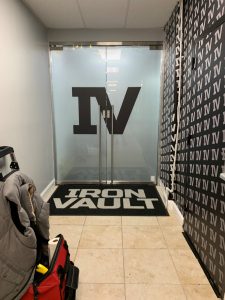The Future of Custom Signs in New York: Digital and Interactive Innovations

Introduction
In the bustling, ever-evolving landscape of New York, businesses are constantly seeking innovative ways to capture the attention of their audience. Custom signs have long been a staple in this effort, serving as both a functional guide and a powerful branding tool. As we move further into the digital age, the future of custom signs in New York is set to be defined by digital and interactive innovations. This article explores the cutting-edge trends and technologies that are shaping the next generation of custom signage, providing insights into how businesses can stay ahead in this dynamic environment.
The Evolution of Custom Signs
Custom signs have come a long way from traditional painted boards and static displays. The evolution of sign-making technologies has seen the incorporation of new materials, lighting solutions, and design techniques. In recent years, the focus has shifted towards digital and interactive elements, driven by advancements in technology and changing consumer expectations.
Traditional to Digital Transition
The transition from traditional to digital signage has been marked by the introduction of LED displays, digital billboards, and electronic message centers. These innovations offer numerous advantages, including dynamic content capabilities, higher visibility, and greater flexibility in messaging. Businesses can now update their signs in real-time, allowing for more timely and relevant communications with their audience.
Key Innovations in Digital Signage
LED and LCD Displays
LED and LCD displays have revolutionized the custom sign industry by providing vibrant, high-resolution visuals that can be seen from great distances. These displays are energy-efficient and have a longer lifespan compared to traditional lighting methods, making them a cost-effective option for businesses in New York.
Digital Billboards
Digital billboards have become a common sight in New York, especially in high-traffic areas like Times Square. These billboards can display multiple advertisements in rotation, allowing businesses to share the space and reach a larger audience. The ability to update content remotely and frequently makes digital billboards a versatile tool for marketing campaigns.
Interactive Touchscreens
Interactive touchscreens are emerging as a popular choice for businesses looking to engage their customers in a more immersive way. These screens can be used for everything from wayfinding in large retail spaces to providing detailed product information at the touch of a button. By incorporating interactive elements, businesses can create a more personalized experience for their customers.
The Role of Augmented Reality and Virtual Reality
Augmented Reality (AR)
Augmented Reality (AR) is poised to take custom signage to the next level by overlaying digital content onto the physical world. AR applications can be used to enhance static signs, providing additional layers of information or interactive features. For example, a restaurant in New York could use AR to display menu items and nutritional information when customers point their smartphones at the sign.
Virtual Reality (VR)
Virtual Reality (VR) offers an entirely immersive experience by creating a virtual environment that users can explore. While still in its early stages for signage, VR has the potential to revolutionize how businesses present their products and services. Imagine a real estate agency using VR signs to give potential buyers a virtual tour of properties without leaving the street.
Custom Signage and Data Integration
The integration of data analytics with custom signage is another area where significant advancements are being made. By leveraging data from various sources, businesses can create signs that are not only visually appealing but also highly targeted and relevant.
Real-Time Data Integration
Custom signs that incorporate real-time data can provide up-to-the-minute information to customers. This could include weather updates, news, stock prices, or social media feeds. For example, a retail store in New York might use a digital sign to display trending products based on real-time sales data.
Personalized Advertising
By integrating customer data, businesses can create personalized advertising experiences. Digital signs equipped with sensors and cameras can detect demographic information and tailor content to the viewer. This level of personalization can significantly enhance the effectiveness of marketing efforts and improve customer engagement.
Sustainability in Custom Signage
As sustainability becomes an increasingly important consideration for businesses and consumers alike, the future of custom signs in New York will be shaped by eco-friendly practices and materials.
Energy-Efficient Solutions
LED technology, already widely used in digital signage, is inherently energy-efficient. Future innovations will likely focus on further reducing energy consumption through smarter designs and more efficient power management systems. Solar-powered signs are also gaining traction as a sustainable alternative.
Eco-Friendly Materials
The use of eco-friendly materials in sign production is another growing trend. Recycled plastics, biodegradable substrates, and low-VOC (volatile organic compound) inks are being used to create signs that have a lower environmental impact. These materials not only help businesses reduce their carbon footprint but also appeal to environmentally conscious consumers.
The Impact of Smart Cities on Custom Signage
New York is at the forefront of the smart city movement, which aims to use technology and data to improve urban living. This initiative has significant implications for the future of custom signage.
Connected Infrastructure
Smart cities rely on interconnected infrastructure, and custom signs are becoming an integral part of this ecosystem. Signs equipped with IoT (Internet of Things) technology can communicate with other devices and systems, providing real-time information and services. For example, a smart sign at a bus stop could display arrival times, route information, and service alerts.
Enhanced Public Safety
Custom signs can play a crucial role in enhancing public safety in a smart city. Digital signs can be used to disseminate emergency information quickly and efficiently, guiding residents and visitors to safety during incidents. Additionally, interactive wayfinding signs can help people navigate the city more effectively, reducing congestion and improving the overall flow of foot traffic.
Challenges and Considerations
While the future of custom signs in New York is bright, there are several challenges and considerations that businesses must keep in mind.
Regulatory Compliance
New York has stringent regulations governing signage, especially in historic districts and areas with high foot traffic. Businesses must ensure that their custom signs comply with local laws and obtain the necessary permits. This can be a complex process, requiring careful planning and coordination with regulatory authorities.
Cost Considerations
The initial investment in digital and interactive signage can be significant. Businesses need to weigh the costs against the potential benefits, considering factors such as increased visibility, enhanced customer engagement, and long-term energy savings. It’s important to develop a clear ROI (return on investment) strategy when adopting new signage technologies.
Maintenance and Upkeep
Digital and interactive signs require regular maintenance to ensure they remain functional and visually appealing. This includes software updates, hardware repairs, and cleaning. Businesses must factor in these ongoing costs when planning their signage strategy.
Case Studies: Innovative Custom Signs in New York
Case Study 1: Times Square’s Digital Billboards
Times Square is renowned for its dazzling array of digital billboards, which showcase the latest in digital signage technology. These billboards use high-resolution LED displays to deliver vibrant, dynamic content that captures the attention of millions of visitors each year. The ability to update content in real-time allows advertisers to run time-sensitive promotions and interactive campaigns, making Times Square a prime example of the future of custom signage.
Case Study 2: The Vessel at Hudson Yards
The Vessel at Hudson Yards features interactive digital kiosks that provide visitors with information about the structure, events, and nearby attractions. These kiosks use touchscreens and real-time data integration to create an engaging and informative experience for visitors. The use of digital signage enhances the overall visitor experience and demonstrates the potential of interactive custom signs.
Conclusion
The future of custom signs in New York is set to be defined by digital and interactive innovations. As businesses strive to capture the attention of an increasingly tech-savvy audience, the adoption of LED displays, interactive touchscreens, AR, VR, and data integration will become more prevalent. Sustainable practices and smart city initiatives will further shape the evolution of custom signage, making it more efficient, environmentally friendly, and integral to urban living.
Businesses in New York must stay abreast of these trends and be willing to invest in new technologies to remain competitive. By embracing the future of custom signs, they can enhance their visibility, engage customers in innovative ways, and contribute to the dynamic, ever-evolving landscape of this iconic city.



